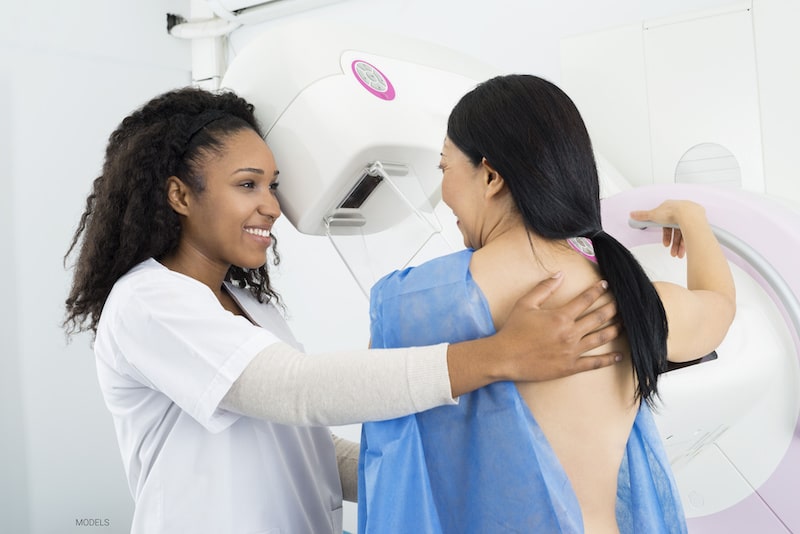Home|Blog | 3 Things You Need to Know About Mammograms if You Have Implants
3 Things You Need to Know About Mammograms if You Have Implants
3 Minute Read:
A mammogram is an X-ray picture of the breasts that helps detect abnormalities in the breast, including breast cancer. Generally, it is recommended that women above a certain age have a mammogram taken every two years to assess for anything abnormal, and more frequently if they are at high-risk. The age they should begin has changed over time due to various issues including financial means, insurance availability and political thoughts, though it also depends on family history and personal concerns.

Typically, the first one is usually between ages 35 and 40, though some present guidelines recommend starting them even later.
Many women who undergo breast augmentation surgery tend not to think about how their breast procedure will affect their future mammograms. However, having breast implants does affect your mammograms and what views are needed for imaging.
1. Inform Your Mammogram Facility and Technician
Breast implants, whether they are saline implants or silicone implants, can make it more challenging for doctors to clearly see all of the breast tissue in standard mammogram series, especially when they are placed above the muscle. Consequently, it is extremely important to inform the technician who is performing your mammogram that you have breast implants.
Women with breast implants require additional mammographic images that allow for better breast tissue visualization. This generally entails having the technician manually pushing the implants back and the breast tissue forward. A total of four images per breast are needed in these situations.
2. Choose the Right Imaging Center
You want to have your mammogram performed by professionals experienced in performing them on women with breast implants. This should be of no issue in most moderate or large cities and towns.
You may want to choose an ACR-accredited imaging center, which means that it is a facility that has been recognized by the American College of Radiology. For an even higher standard, choose an ACR-accredited imaging center that is designated as a “Breast Imaging Center of Excellence” (BICOE) by the ACR.
3. Mammograms Versus MRIs in Detecting Silicone Breast Implant Rupture
Silicone breast implants can break down and lose their integrity without any resultant change in breast size or shape. This is often known as a silent rupture and is a characteristic of the most recent generations of implants. In detecting such a rupture, mammograms can identify this 60% of the time — so there is a high percentage of false negatives.
On the other hand, MRIs can detect rupture of these implants 90% of the time.
That is a big difference!
Unfortunately, MRIs are far more expensive overall, whether one pays out of pocket or it is paid for by insurance companies. Digital ultrasounds are a less expensive but also very sensitive means to assess for rupture of silicone implants.
Are Mammograms Worth It With Breast Implants?
Even though mammograms are slightly more complex when breast implants are present and they are not as sensitive as MRIs or digital ultrasounds in detecting silicone implant rupture, their purpose in detecting the possible presence of breast cancer is far too important not to have them done.
Contact the Arizona Center for Breast Surgery to Learn More
If you have questions about breast augmentation surgery, implants, or any of the other procedures we offer, please contact Dr. Steven H. Turkeltaub by calling (480) 451-3000 or by using our online form.
